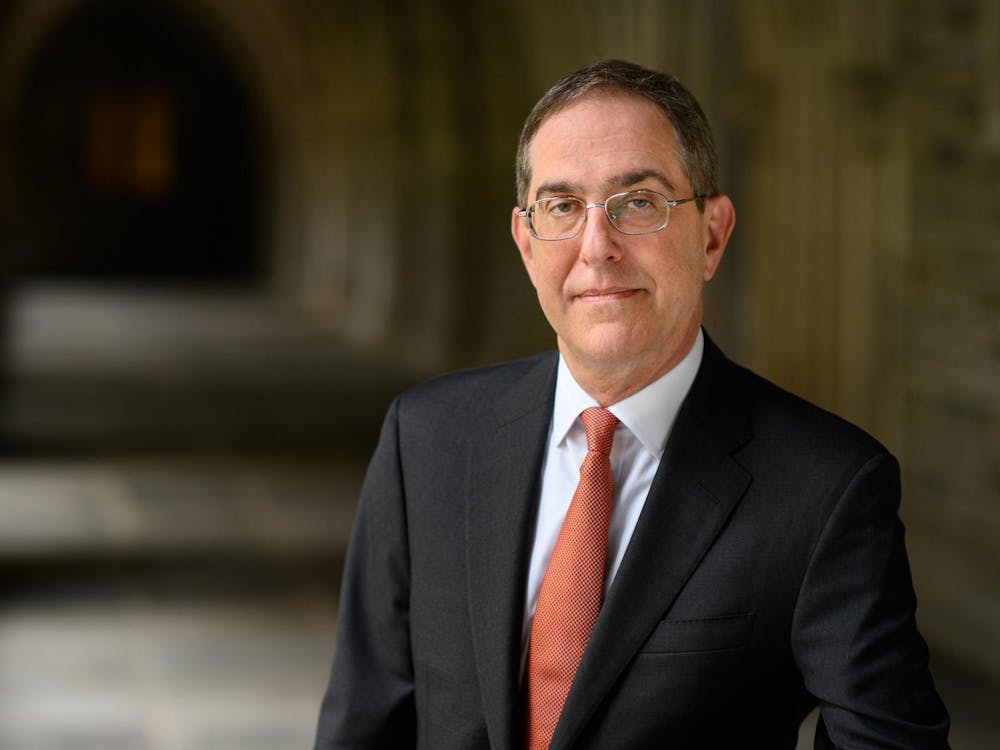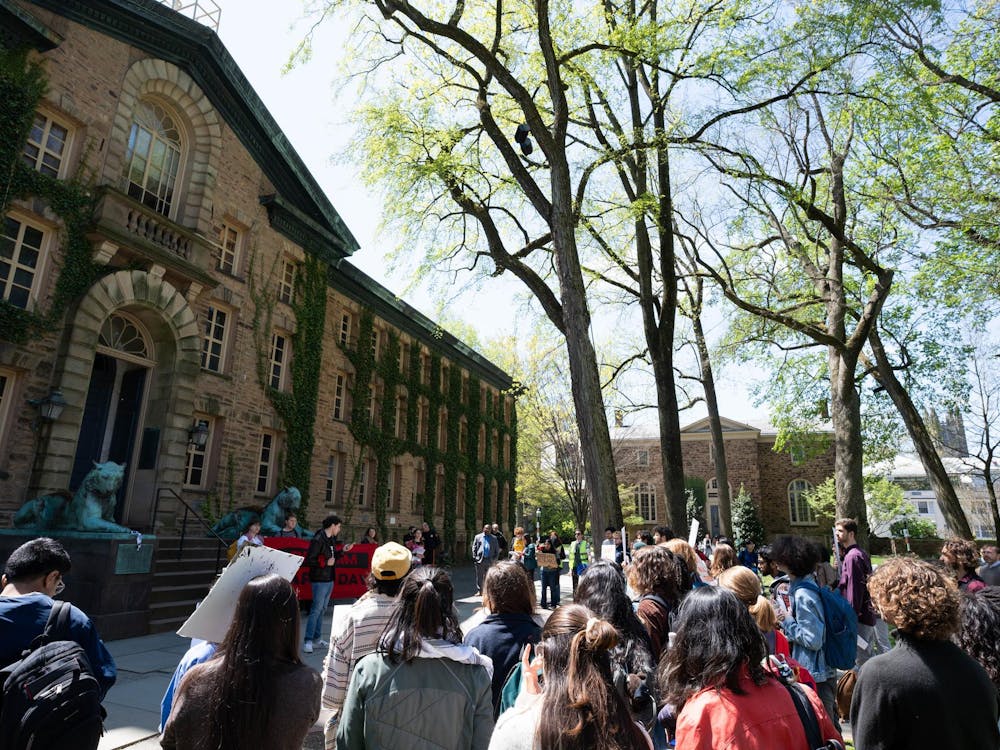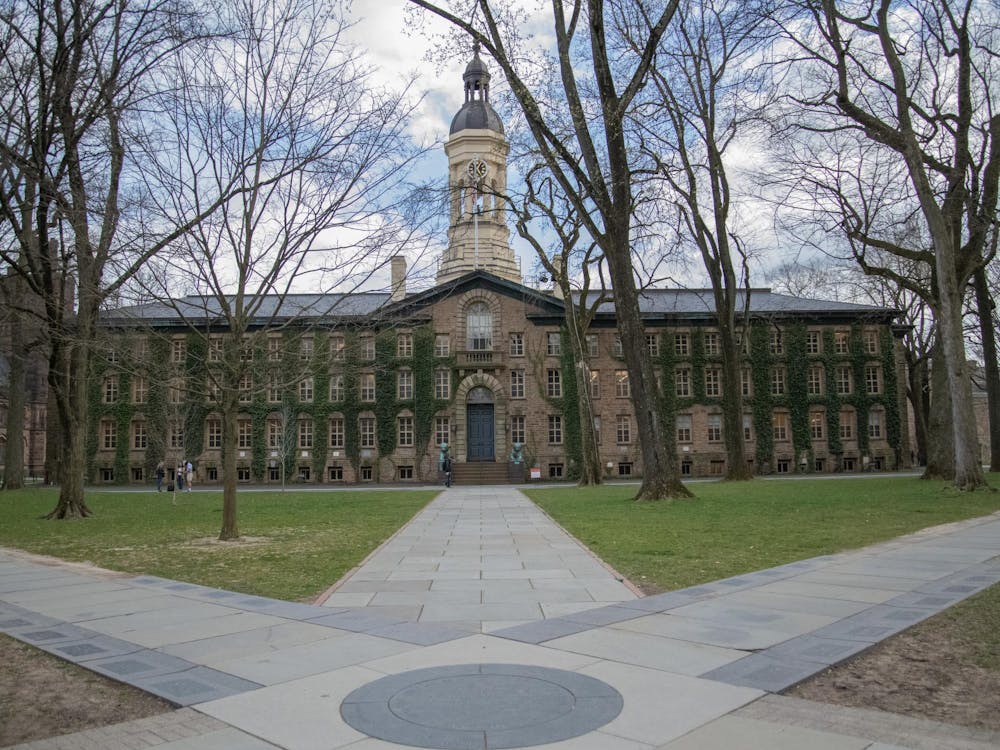A Sept. 29articlein The Daily Princetonianon “We Speak: Attitudes on Sexual Misconduct at Princeton University” survey results began by stating, “1 in 3 undergraduate women have experienced inappropriate sexual behavior at U.” The University’s own story on these results led with: “a sizeable majority [of students] knows where to go on campus for help following an incident of nonconsensual sexual contact.” The community’s response to the survey results has been disappointingly muted, perhaps because no one was surprised by the appalling facts the data exposed. Even the email from U. President Christopher Eisgruber ’83 described the findings as “heartbreaking” and “disturbingly and unacceptably high,” but he never suggested the numbers were shocking.
The distinctive leads highlight different aspects of the results of the survey and perhaps shed light on what different parties would like to focus on, though neither focus on what is perhaps the most important and appalling fact, one that is only realized once different statistics are considered altogether.
The entire campus community seems to have failed to compare this survey data to other relevant available information. Princeton conducted its own survey rather than use the survey drafted by the American Association of Universities (AAU). Twenty-seven other universities participated in the AAU survey, including all of the other universities in the Ivy League. Princeton’s use of its own survey has both advantages and drawbacks. The survey can address some unique Princeton issues, however, comparing our results with those of the AAU survey is challenging. The University, on page 4 of theWe Speak report, argues that the findings are “not directly comparable” to other studies, perhaps because they cover different time frames and asked different questions, but are “generally consistent” with results from other schools nonetheless.
But are our results “generally consistent” with those of other schools? Across all 27 universities taking part in the AAU survey, 23 percent of undergraduate women during their entire time at their universities had experienced sexual assault or misconduct due to physical force, the threat of physical force or incapacitation. All seven Ivies in the AAU survey had sexual assault or misconduct rates for undergraduate women either equal to or greater than the average (Columbia and Cornell at 23 percent, Brown 25 percent, Harvard 26 percent, Penn 27 percent, Dartmouth and Yale 28 percent). The highest rates for undergraduate women were at USC and Michigan at 30 percent.
Princeton’s definitions for sexual misconduct differ somewhat from those in AAU survey. But trying best to make a direct comparison, 27 percent of undergraduate women responding to the Princeton survey had experienced nonconsensual sexual contact (This eliminates cases such as stalking since that was evaluated separately on the We Speak survey.) This statistic is above the AAU average and on the high end of the Ivy rates, though it does seem “generally consistent.” However, the Princeton time period is more restrictive than that used in the AAU survey. Princeton asked respondents to just note experiences within the 2014-15 academic year as opposed to during their entire time at the University.
Equally interesting is the lack of comparison of the We Speak results to other data from Princeton. Princeton’s Annual Security and Fire Safety Report, also known as the Clery Act report,was published the very next day and covers “crime statistics for the campus, public areas immediately adjacent to or running through the campus, and certain noncampus facilities” for the 2014 calendar year. The Prince news coverage has made no effort to put these numbers in conversation with the We Speak survey results.Nor has anyone taken that information and compared it to theSex Discrimination and Sexual Misconduct Student Discipline Report2014-2015(which has been poorly publicized compared to the other two reports which were at least emailed to all undergraduates; as far as I can tell the ‘Prince’ never covered this report at all).
Granted, it’s hard to directly put all this data together; each report uses slightly different definitions or boundaries — both physical and time-wise. Nevertheless, they each cover issues of sexual misconduct, and it’s worth considering the data side-by-side.
Let’s start by looking at rape statistics across these three reports. According to page 12 of the We Speak report, just over 5 percent or 1 in 19 undergraduates who responded to the survey (specifically 1 in 13 undergraduate women) experienced “nonconsensual sexual penetration,” commonly known as rape. That’s 143 of the 2710 undergraduates who took the survey, which is 143 too many.
The Clery Act report had an official total of eight rapes reported during the 2014 calendar year, 10 if you include incidents in residential facilities. Hidden in the text on page 51 of the report, and not in the charts on the following page, the University offers information, not officially part of the Clery requirements, about the additional number of reports received by confidential counselors on campus but not officially reported to the University. Though this data isn’t broken down by types of sexual offenses, such as rape versus sexual assault, 28 incidents of sexual offenses were reported to these confidential counselors.
The Clery Act report covers a slightly different time period from the We Speak survey, although the length of both is one year. Even so, there is an irrefutably huge difference between the 143 self-reported and eight officially reported rapes in a 12-month period.
I’m not saying there is any manipulation of the data. Presumably students, for a variety of reasons, are choosing not to officially report incidents of rape, as the We Speak survey responses support. This disparity and the reasons behind it is an issue certainly warranting more thoughtful discussion and resolve. Hopefully such action will occur throughout this year. But I think we should be outraged more by this huge discrepancy between what individuals are alleging is occurring on campus and what is actually being reported.
And if that isn’t enough to incense you, adding in the data from the Student Discipline report should. You know those 143peoplewho say they were raped last academic year? Well, zero students were expelled for “nonconsensual penetration” or rape last year. Princeton’s adjudication procedures found no one responsible for rape last year.

It’s true that only eight allegations of rape were reported to the University in 2014 and the data for spring 2015 is not yet available, and I’m not saying that in all eight of the Clery Act cases the committee should have found someone responsible; I don’t know the evidence in those cases. But it does seem strange that no one was found responsible for rape last year. The numbers cause me to be highly skeptical about what is occurring on campus regarding the reporting of sexual misconduct and its adjudication and punishment. (Notably, Princeton’s rape expulsion rate isn’t unique, even though beyond college campuses, rape is considered a felony crime.)
Nevertheless, I do see plenty of encouraging points in the reports as well. Under the University sex discrimination and sexual misconduct policy, the University found a total of 24 respondents responsible in sex discrimination and misconduct cases in the 2014-15 academic year. Granted, I have no knowledge of the cases, but given that I’m naturally inclined to believe a victim, this number seems roughly appropriate, even though the rape-specific numbers still seem questionable and worrisome, as well as the total numbers reported and thus adjudicated. Among other things, I’m glad that the University included a trigger warning in the results, that it has held numerous events to discuss the survey results and that across the board it has acknowledged the self-reported rates in the survey are extremely troubling. Indeed, the University launched the UMatter campaign this fall to address issues like bystander intervention.
But you would think that as a first step, a university fully committed to creating real change would make all this information much more readily available and easier to consume. This means publicizing all the various reports covering sexual misconduct in one place and conducting a cross-report analysis, including comparing our internal data to one another and to that of the AAU survey even given the limitations. The University should have one website with all of this information and email it to the campus community, just as it does in accordance with the Clery Act with those annual reports.
It also means the University writing should lead with the most important information, even if it is troubling rather than positive. It means clear charts with all the important and relevant numbers rather than burying some of the data in paragraphs of text and leaving only more basic data in easily digestible chart form.
Though it’s a bit hard to find and comprehend, the data doesn’t lie. Clearly we, as individuals and as a campus community, need to do much more to reduce sexual assault and misconduct on campus. No one should be satisfied until the number of victims of sexual misconduct is zero.
Marni Morse is a politics major from Washington, DC. She can be reached at mlmorse@princeton.edu.








